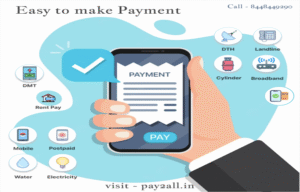The Growing Culture of Digital Bill Payments in India

In recent years, India has witnessed a phenomenal shift towards digital bill payments, reflecting a broader digital transformation sweeping across the nation. With the confluence of technological advancements, increasing smartphone penetration, and a government keen on nurturing a digital economy, the traditional methods of paying bills are being rapidly supplanted by digital alternatives.
The Evolution of Bill Payments in India
For decades, bill payments in India involved long queues at payment centres, tedious paperwork, and often substantial delays. However, the introduction of digital payment solutions has not only expedited the process but has also made it more accessible and convenient for a diverse population.
The Driving Forces Behind Digital Bill Payments
1. Technological Advancements:
The backbone of digital payments is robust technology. The proliferation of 4G connectivity, coupled with affordable smartphones, has enabled even the rural population to access online services with unprecedented ease. The advent of platforms like the Unified Payments Interface (UPI), Paytm, PhonePe, and Google Pay has revolutionised the way Indians transact.
2. Government Initiatives:
The Indian government has been a pivotal player in fostering a culture of digital transactions. Programmes such as ‘Digital India’ and ‘Jan Dhan Yojana’ have been instrumental in promoting cashless transactions. The demonetisation drive of 2016 further accelerated the adoption of digital payments, as people sought alternatives amidst currency shortages.
3. Consumer Behaviour:
With changing lifestyles, consumers are increasingly leaning towards convenience. Digital bill payments offer the ability to pay anytime, anywhere, reducing the dependency on physical payment locations.
The Benefits of Embracing Digital Bill Payments
Digital payments are not just a trend but a necessity in our fast-paced world. They provide a treasure trove of benefits for both consumers and businesses alike.
For Consumers
- Convenience and Efficiency: Digital platforms allow users to pay bills at their convenience, without the hassle of standing in queues. Notifications and reminders ensure that bills are paid on time, avoiding late fees and penalties.
- Variety of Options: With numerous apps offering bill payment services, consumers are spoiled for choice. They can choose platforms based on various factors like user interface, cashback offers, and security features.
- Enhanced Security: Contrary to the lingering scepticism, digital payments are often more secure than traditional cash payments. With advancements in encryption and authentication, the risk of fraud is significantly minimised.
For Businesses
- Streamlined Processes: Businesses can benefit from streamlined bill processing, saving time and operational costs. Automation reduces human error, and digital records are easier to audit and analyse.
- Customer Engagement: Digital payments provide businesses with valuable insights into consumer behaviour, which can be leveraged to improve services and engagement.
- Sustainability: Reducing paper usage aligns with global sustainability goals, fostering a positive brand image.
Challenges Facing Digital Bill Payments
Though the rise of digital solutions is promising, there are still several challenges to overcome.
Digital Literacy and Accessibility
Digital literacy remains a key barrier, especially in rural and semi-urban areas. Many potential users struggle to navigate apps and online platforms, necessitating literacy programmes and user-friendly interfaces.
Cybersecurity Concerns
Despite advancements, cyber threats remain a significant concern. Phishing, identity theft, and fraud continue to pose risks, highlighting the need for robust cybersecurity measures and consumer awareness campaigns.
Infrastructure Limitations
India’s digital infrastructure, although rapidly improving, is sometimes impeded by connectivity issues, particularly in remote areas. Continuous investment in infrastructure is vital for sustaining growth in digital payments.
The Future of Digital Bill Payments in India
The trajectory for digital bill payments in India is undeniably upward. Innovations such as blockchain, Artificial Intelligence, and machine learning promise to further streamline operations and enhance security.
Increased Adoption of AI and Automation
With AI becoming more ingrained in financial platforms, we can expect more intelligent systems that predict user behaviour, offer personalised payment solutions, and enhance fraud detection mechanisms.
Expansion into Rural Markets
As digital literacy enhances and infrastructure develops, rural markets represent a significant growth frontier. Simplified apps with vernacular language support can play a key role in driving adoption.
Integration with Emerging Technologies
Future platforms may see the integration of augmented reality (AR) and virtual reality (VR), offering a more interactive user experience. Such innovations can potentially redefine consumer interaction with payment platforms.
Conclusion: Embracing a Digital Future
The growing culture of digital bill payments in India is more than just a modern convenience; it’s a cornerstone of the nation’s push towards a more inclusive and efficient economy. As digital payment systems become more entrenched in daily life, they hold the promise of bridging the gap between the digital haves and have-nots.
The path forward involves concerted efforts by the government, corporations, and technology providers to address existing hurdles. Promoting digital literacy, enhancing security measures, and building robust infrastructure are critical steps.
As we journey into an increasingly cashless society, the ease and speed of digital bill payments will likely become the norm, harmonising with India’s digital aspirations. The impact of such a shift is profound, offering a glimpse into a future where transactions are seamless, inclusive, and resilient.
Ultimately, embracing the digital future is not just an option but a necessity for thriving in the global economy. With the right strategies and commitments, India is well on its way to becoming a leader in the digital payment landscape, offering lessons and models for the rest of the world to emulate.







